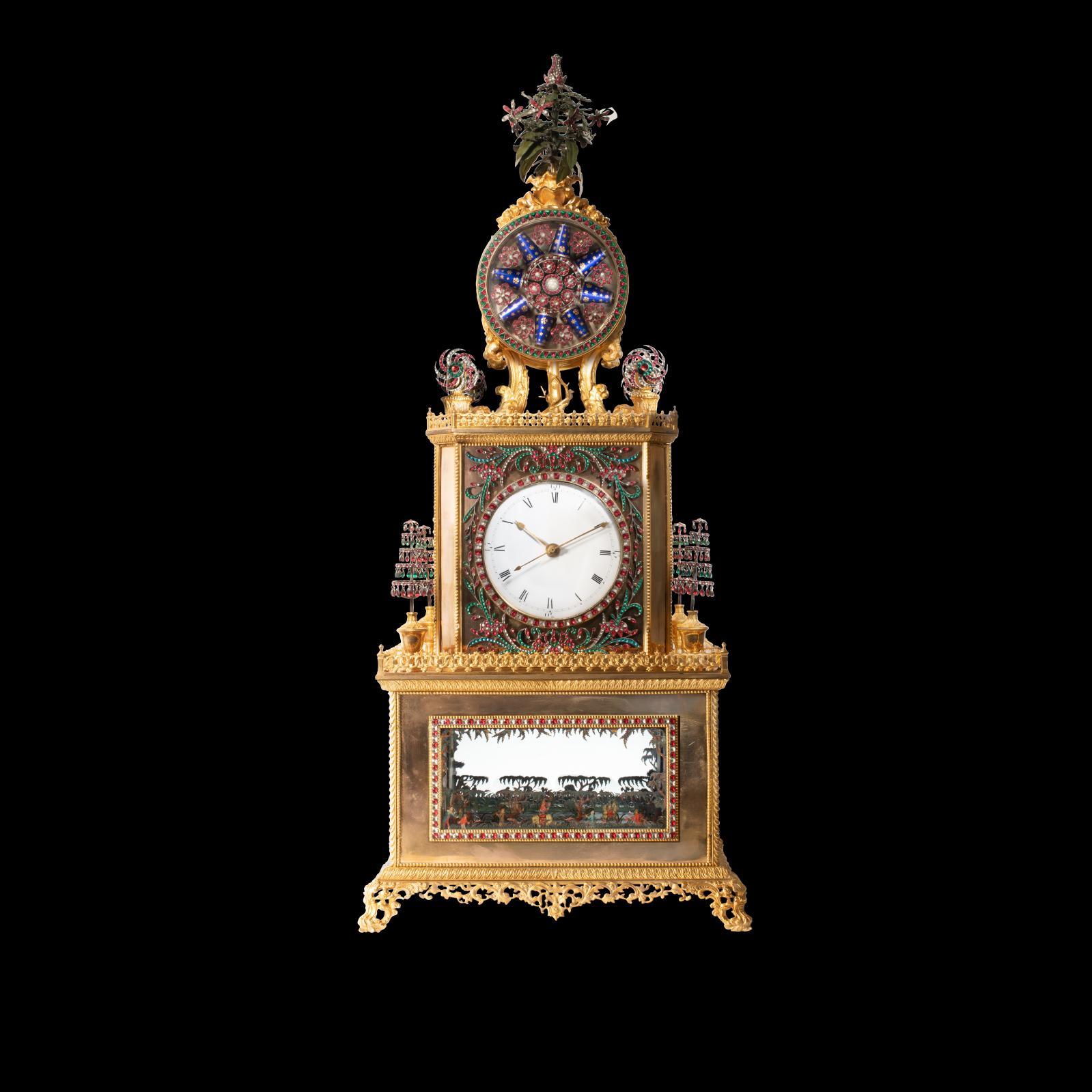by Tatsiana Zhurauliova

China, Qianlong dynasty (1736-1795). Rare and important imperial automaton clock in gilt bronze and stone inlays, decorated with tributes bearers, h. total 85 cm, base: 36 x 28 cm/h. 33.4 in, base: 14.1 x 11 in. Estimate : by request Sale: June 15, 2022. Aponem.
This installment of the “Œuvres Choisies” exhibition brings together a remarkable group of objects in different media and from a variety of cultures that are certain to delight visitors with their beauty and historical resonance. Upon entry, one is immediately drawn to the rare automaton clock from China dating back to the Qianlong Era (1736-1795). The gilded bronze surfaces of the clock’s three tiers are richly ornamented with stone inlays that feature vegetal, animal, and architectural details and multi-figure compositions. Tree and wheel-like elements in translucent colored glass provide additional decoration and add playfulness and dynamism to the clock’s automations that are activated on the hour (or on demand by a dedicated button). The movement of figurines and ornamental elements is accompanied by music, with a choice of three melodies controlled by a button. This clock is a part of the legacy of the so-called “clock diplomacy”—the practice by Jesuit missionaries to gift elaborate Western timepieces to Chinese dignitaries in order to build a relationship with the imperial court and gain influence. The Kangxi Emperor (1654-1772), who became particularly interested in Western science, used imported clocks to study… Click here to read more




